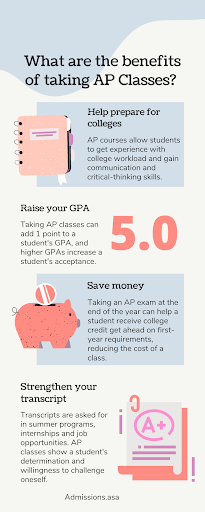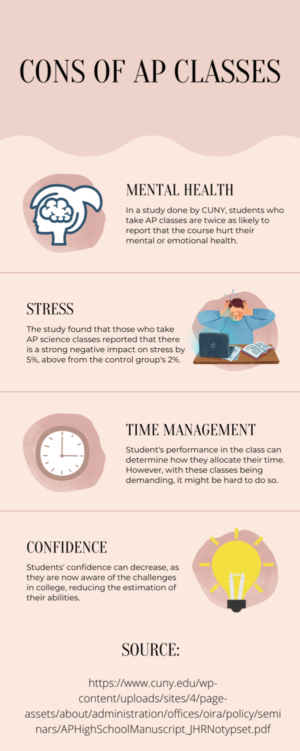Boost or burden
AP dropout reveals underlying culture of taking advanced classes
Senior Riya Agarwal helps junior Anushree Chakrabarti answer a question in AP biology.
November 28, 2022
To AP or not to AP, that is the question. Come April, returning students must choose between the hundreds of classes offered and decide between whether Advanced Placement, Dual Enrollment, honors or regular courses best fit their curriculum for the next school year.
APs, however, are unique in their foundation by the College Board; they were created as a way to introduce students to college–level courses and prepare them for the fast paced rigor. At the end of the year, students can choose to take the AP exam that allows them to aim for college credit.
According to the CollegeBoard, the number of U.S. public high school students enrolled in AP classes has significantly increased from 2011 to 2021 by approximately 30%. The decision to enroll in AP classes varies from student to student– ranging from academic rigor for college applications to GPA boost and environmental pressure.
“I feel like AP classes suit me better in terms of academic pace, content and learning style. I am able to push my limits and fulfill my potential,” senior Varna Selvakumar, who is currently taking 5 APs, said. “All that being said, I will say that college admissions remain a motivator for taking such rigorous courses at the same time. Taking a heavy course load is my way of showing admissions that I am willing to challenge myself academically.”
The culture and social environment for taking APs may also be a contributing factor with data showing an increase from the 2018-19 school year to 2020-21 by approximately 1.1% with 909 students enrolled.
This increase in AP enrollment at CHS differs in comparison to a different school in Fairfax County, such as Centreville which experienced a 0.12% decrease in enrollment with 785 students enrolled.
“I feel like the culture is toxic because our school is so competitive, like CHS is an AP school, whereas their schools aren’t that stressed out about academics like students at CHS are,” junior Camila Canelas Soto said. “People just kind of go into APs as a freshman and sophomore to get ahead, and it gets especially hard for someone who is trying to keep up and pass.”
Michelle Pringle, counselor and AP Coordinator at CHS, also identifies a prevalent social pressure to take APs, where students believe that taking AP courses are necessary in order to be accepted into college. While the academic challenge may be rewarding, the strong pressure to load on AP courses often leads to students to feel the need to struggle through courses they do not enjoy, leading to unsatisfied grade performance, said Pringle.
“This has been an ongoing issue as long as I have been here despite our recommendation for students to find a balance between academics and social life,” Pringle said. “Taking a certain number of AP classes is not a badge of honor.”
While the benefits of piling on AP’s seems appetizing, the aftertaste may not be so savory, leading to the downside of the AP classes that may cause some to drop them off their course menu.
“I dropped AP US History because I was overloaded with work for my other classes,” junior Connor Liu said. “Before I dropped APUSH, I was in three AP classes– AP research, AP language and composition and APUSH, all of which happened to be on the same day. So with all the due dates and work coming in, it was just a little too much.”
Other lesser known APs, such as AP seminar, have also seen some dropouts. The course is a recently developed class for students to write and craft well developed research projects.
“I dropped AP seminar [in] my sophomore year because I went in thinking that it would be one of the easier AP courses because that’s what everyone advertised it to be,” Canelas Soto said. “But at the end of the semester, I felt really overwhelmed because I was doing a lot of things all at once.”
Overwork and stress are common reasons for dropping a course, but there are other factors including simple disinterest. Students such as senior Ilanchezian Palpandian, who has taken all the necessary credits for math, including calculus and multivariable calculus, chose to take AP statistics due to an initial lack of options for a different math course.
“I took AP statistics because there was nothing else I could take at the moment,” Palpandian said. “I got options later so there was no reason for me to stay in statistics. I also just didn’t like the topic.”
There is no perfect formula or recipe for everyone in regards to taking AP classes – excessive course rigor and the menu is overcrowded, but too little and the menu is lacking.
“There’s no set perfect number of manageable APs that I can confidently recommend,” Selvakumar said. “Everyone has their own limits and commitments whether it be inside or outside of school.”






